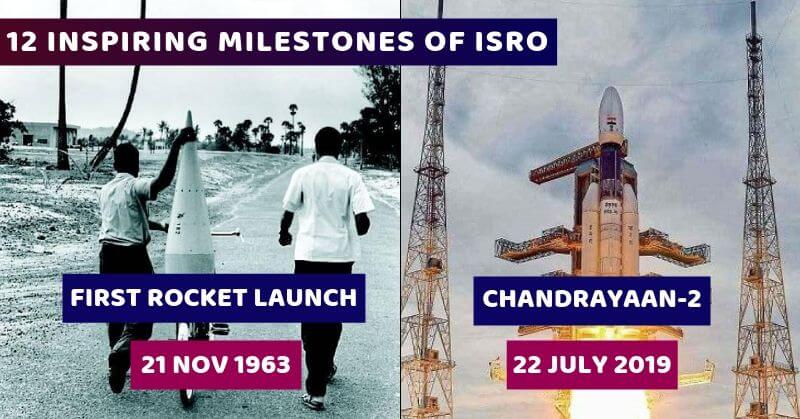ISRO Indian Space Research Organization has just made history a few days back with India’s second mission to the moon successfully, Chandrayaan-2. It will complete the journey of 384,400 km and land on the moon on 48th day of the mission. Formed in 1962, it was initially called Indian National Committee for Space Research under the leadership of Vikram Sarabhai and physicist Kalpathi Ramakrishna Ramanathan.
Without funding, fewer scientists and even with fewer resources, they have launched the first rocket in a year in 1963. They were transporting the parts to be assembled by bicycle. After 57 years, now we are launching rockets to other planets like Mars and even in Moon. Isn’t it proud feeling for Indians? Well, let us see the greatest milestones in the history of ISRO.
1. The First Rocket Launch
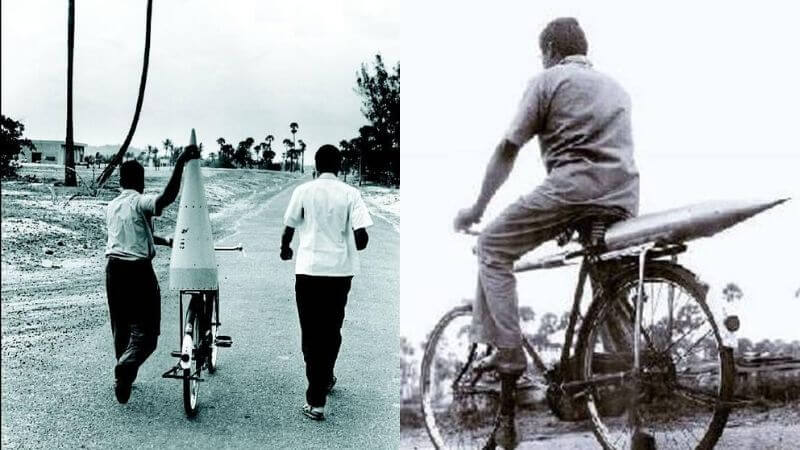
After the Indian National Committee for Space Research was formed in 1962, it was a year later on November 21, 1963, India launched its first rocket into space in the presence of Dr. Homi Bhabha. Dr. APJ Abdul Kalam was the member of the rocket launch team during that time. He also described how INCOSPAR had to acquire land from a local church and also need to relocate the villagers from there as they need to do preparations. The rocket components had transported via bicycle. The sounding rocket was launched from the Thumba Equatorial Rocket Launching Station in the fishing village of Thumba, Kerala. It is now known as the Vikram Sarabhai Space Centre.
2. The First Satellite Launch
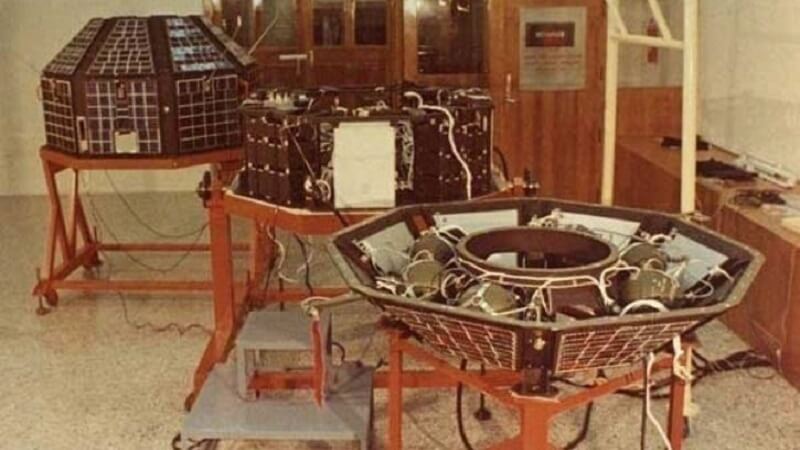
India launched its first satellite Aryabhatta on April 19, 1975. It was named after the famous Indian astronomer Aryabhata. It was designed and fabricated in India and was launched onboard the Soviet Union Kosmos-3M rocket.
3. The First Indian-Made Rocket Launch
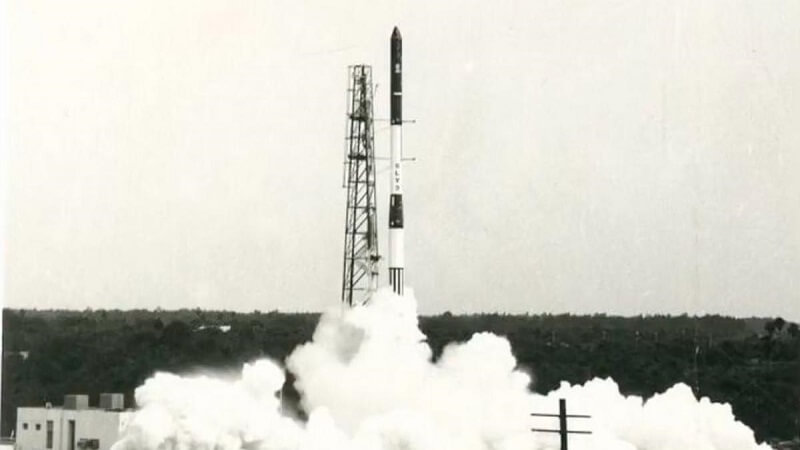
The first rocket launch in 1963 was Nike-Apache rocket and was supplied by NASA. ISRO went on to build its first launch vehicle, the SLV-3 (Satellite Launch Vehicle-3). The satellite was launched on July 18, 1980, from the Sriharikota Range, with the Rohini satellite RS-1 on board. It was India’s first experimental satellite launch vehicle, a solid four-stage rocket weighing 17 tonnes, which is capable of placing 40 kg class payloads in Low-Earth Orbit. This also officially made India, the sixth independent country to put an indigenously-made satellite into space.
4. Testing Satellites With Bullock Carts
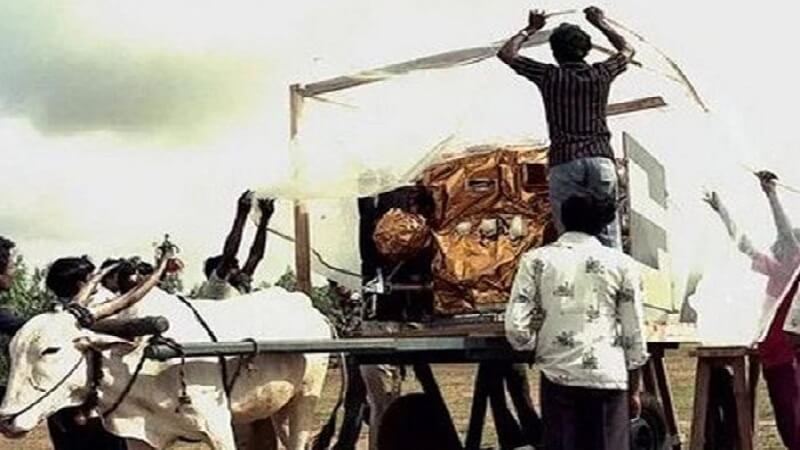
Ariane Passenger PayLoad Experiment (APPLE) was India’s first geostationary experimental communication Satellite Project. It was an experimental communication satellite successfully launched by Ariane-1, from Kourou, Guiana Space Centre in France on June 19, 1981. In 1981, there were limited facilities as the only telephone and telex (a network of teleprinters) were available for communications. Even ISRO did not have mainframe computers and setting up APPLE Mission Control Centre at Sriharikota was posing great challenges. They had loaded the satellite on a bullock cart.


